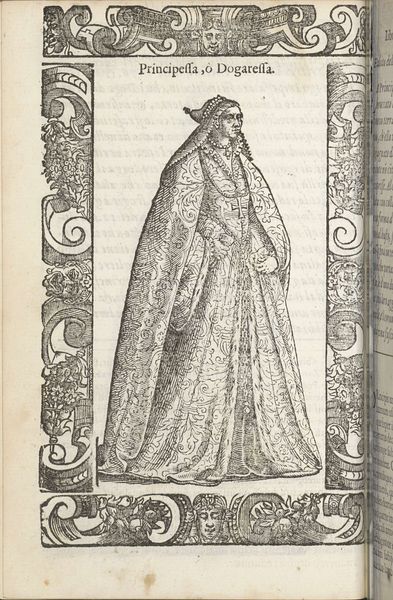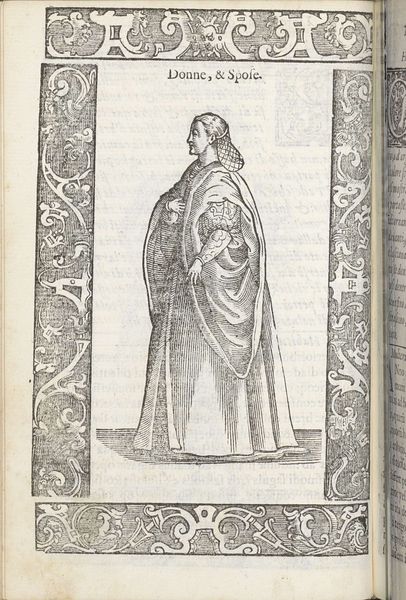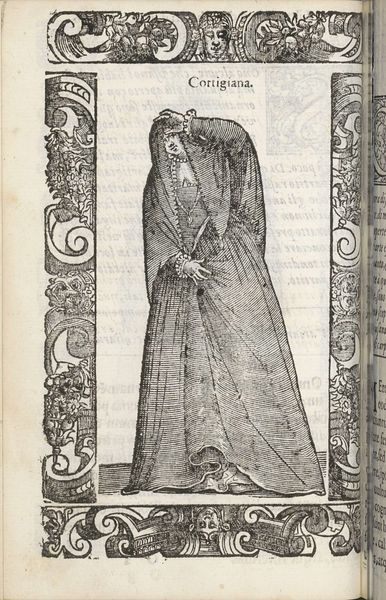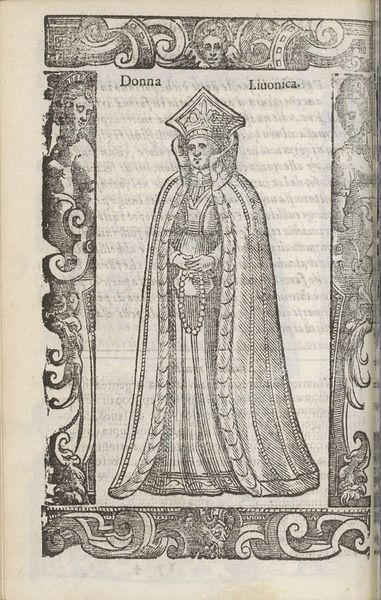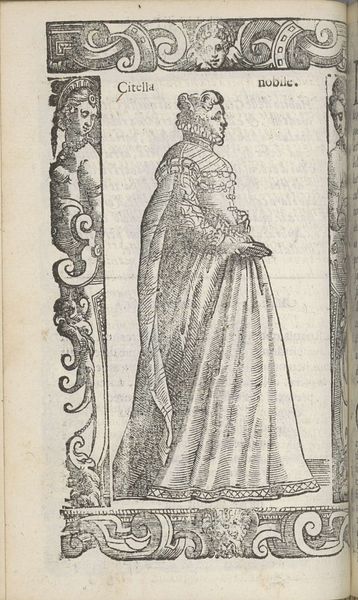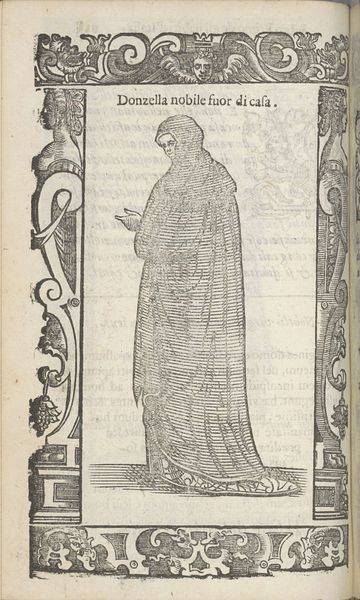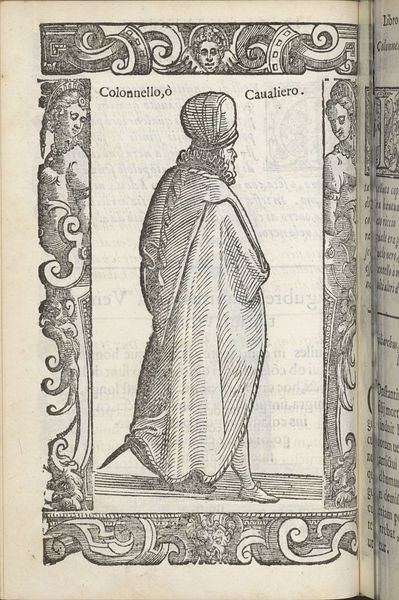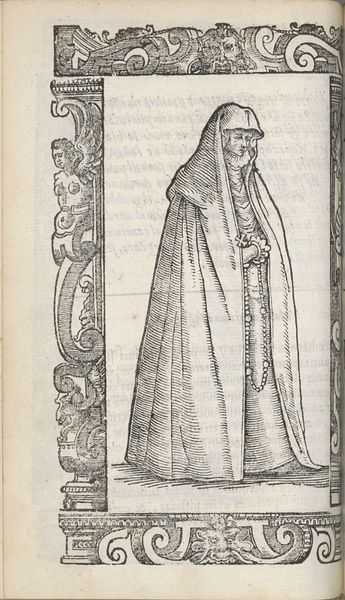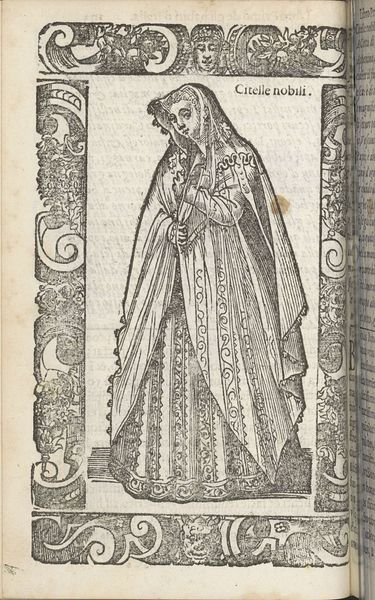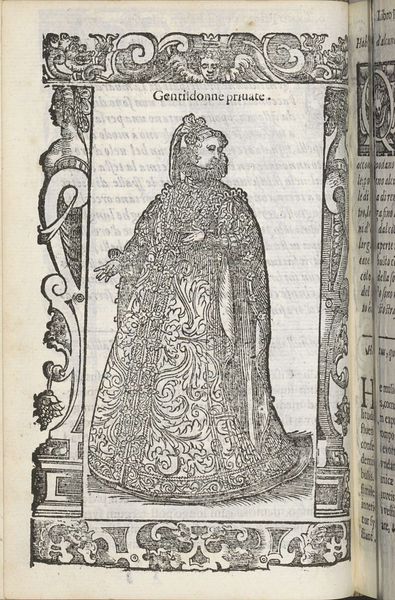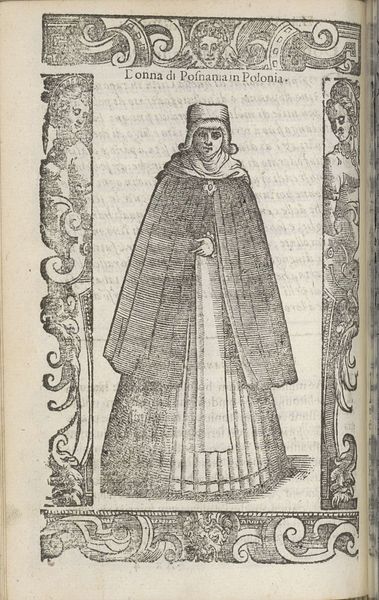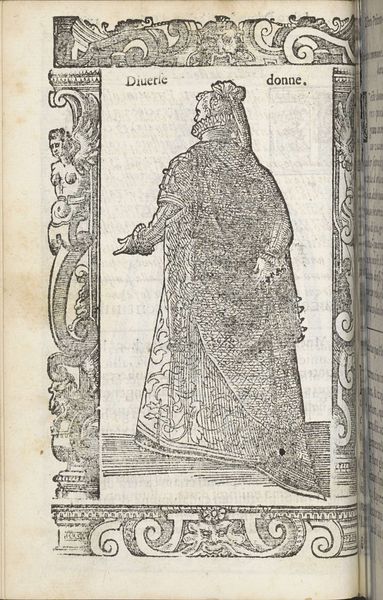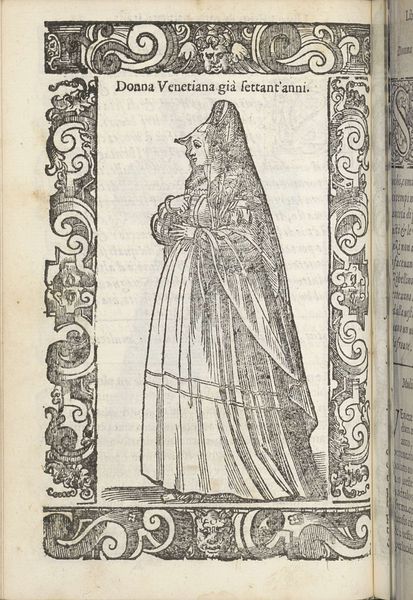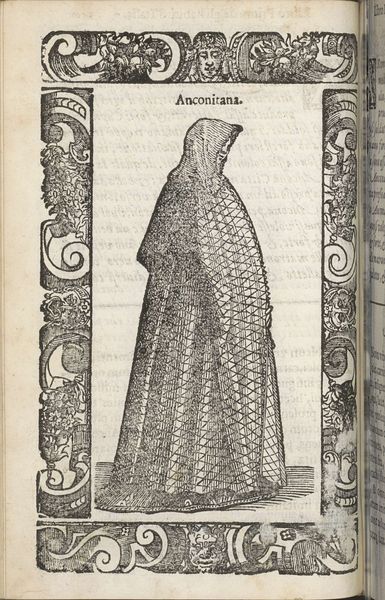
drawing, print, paper, ink, engraving
#
portrait
#
drawing
#
aged paper
#
medieval
#
narrative-art
# print
#
pen sketch
#
pencil sketch
#
old engraving style
#
sketch book
#
figuration
#
paper
#
personal sketchbook
#
ink
#
pen-ink sketch
#
line
#
pen work
#
sketchbook drawing
#
history-painting
#
sketchbook art
#
engraving
Dimensions: height 167 mm, width 125 mm
Copyright: Rijks Museum: Open Domain
Curator: Here we have a 1598 print titled "Funebre de'nobili," by Christoph Krieger, an intriguing piece executed with ink on paper, showcasing the artist’s mastery of line and form. Editor: The image immediately strikes me as a study in contrasts. The solemnity of the central figure clashes with the almost playful border. It speaks to a period of intense social stratification, wouldn't you say? Curator: Absolutely. Krieger operated within a very specific social and artistic landscape. Printmaking during this time wasn’t just about aesthetic appeal; it played a vital role in disseminating ideas and portraying social structures. "Funebre de'nobili," seems particularly concerned with nobility. Editor: You can see that emphasis on class through the robes of the figure at the center, but also within the detail in the frame. I wonder about the performativity of grief in elite circles then and what this work is really asking us to think about how the upper crust display feelings to cement and retain power. Curator: That’s a fascinating point. Consider how Krieger uses the graphic medium. The starkness of the ink lines adds a formality that, paradoxically, both celebrates and perhaps subtly critiques the noble class. The detailed work emphasizes an attention to outward appearance but we can't know how he thought about those he depicted or served. Editor: I am compelled to think about how the print, through its likely circulation among particular audiences, participated in constructing and maintaining particular ideas about status and social difference. The artist offers little in the way of background; this adds a rather intriguing ambiguity to the sitter's intentions. Curator: An ambiguity heightened by the limited emotional expression on the figure’s face. Yet, his posture – head held high, dignified gaze – projects authority. Krieger was likely playing to what the norms of that specific noble hierarchy were. Editor: It makes me question who commissioned the piece and what purpose it served within the cultural conversations of its time. This almost begs to be placed alongside writings or cultural products from the period, helping to illustrate complex social debates. Curator: Indeed, engaging with those contextual threads is crucial. Considering how prints functioned as disseminators of both image and ideology lets us look at artwork to ask more relevant contemporary questions. Editor: Agreed. For me, Krieger's print serves as a crucial reminder of the deep-seated power dynamics embedded within artistic representation itself.
Comments
No comments
Be the first to comment and join the conversation on the ultimate creative platform.
